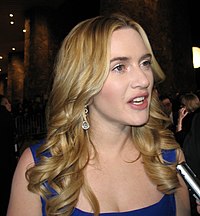Piano Sheets > Kate Winslet Sheet Music > What If (ver. 2) Piano Sheet
What If (ver. 2) by Kate Winslet - Piano Sheets and Free Sheet Music

About the Song
Other avaliable versions of this music sheet: Version 1 Version 2
"What If" is a single by actress Kate Winslet, released in November 2001.
The song is taken from the 2001 animated film Christmas Carol: The Movie which is based on the Charles Dickens classic novel. Winslet provided the voice of Belle in the film, which also stars Nicolas Cage, Jane Horrocks and Simon Callow.
"What If" is a ballad that follows the film's theme, and was the first and only song to be released from the official movie soundtrack. It was written and produced by Steve Mac, who has worked with Westlife, Boyzone and 5ive. The music video, which was directed by Paul Donnellon and produced by Chris Horton, shows Winslet walking around an old Victorian house, along with clips from the film.
News that Winslet was secretly recording the one-off single to vie for the 2001 UK Christmas number one spot was reported in the The Daily Mirror newspaper. In the event the song entered the UK.
Download this sheet!
About the Artist

Random article
How to search for the best free sheet music on the internet If you would love to learn how to play the piano but do not have the funds to afford expensive lessons then sheet music can help you. There are plenty of websites online, which provide you with free sheet music. You can play classic compositions using such sheet music free piano.
Different styles
You can search online to find free sheet music for piano. There are sites, which provide many different kinds of genres of music and the piano notes for such compositions. Whether it is rock and roll, pop, rhythm and blues, classics or some other genre, you are sure to find the appropriate musical notes for these compositions.
(More...)
